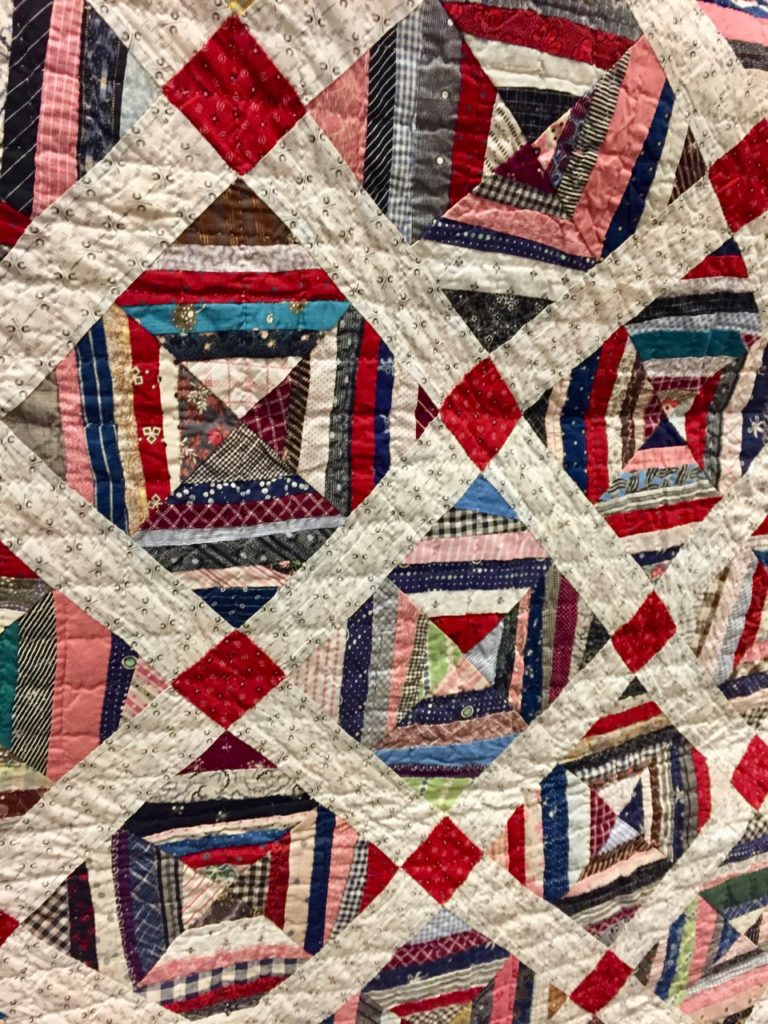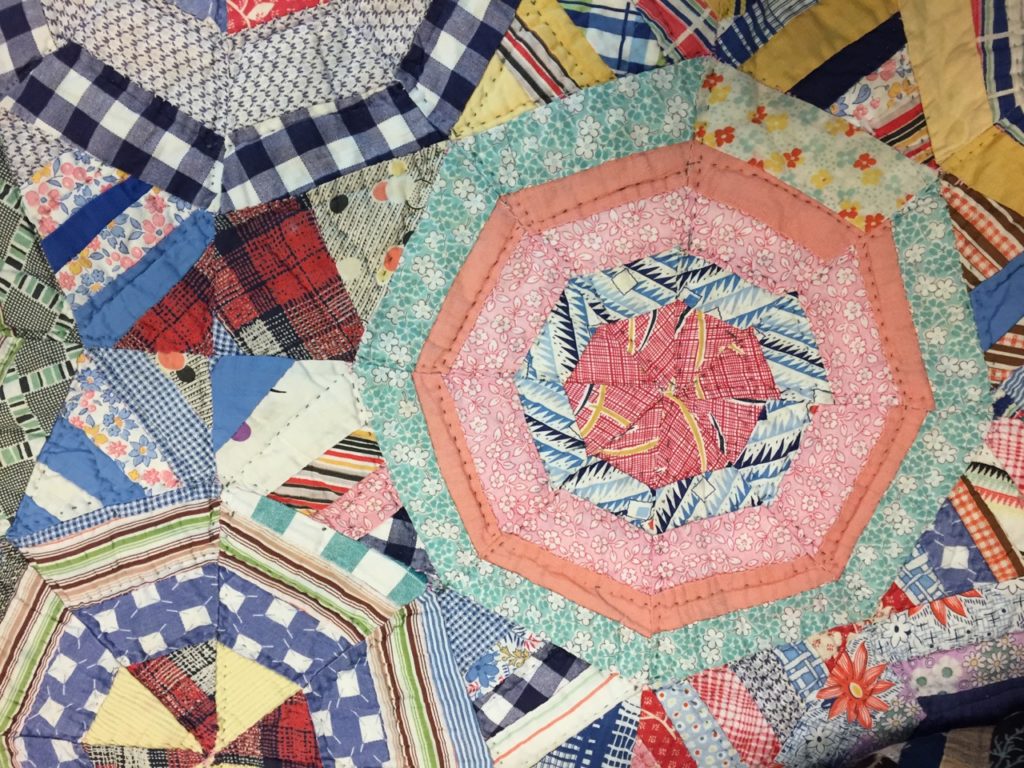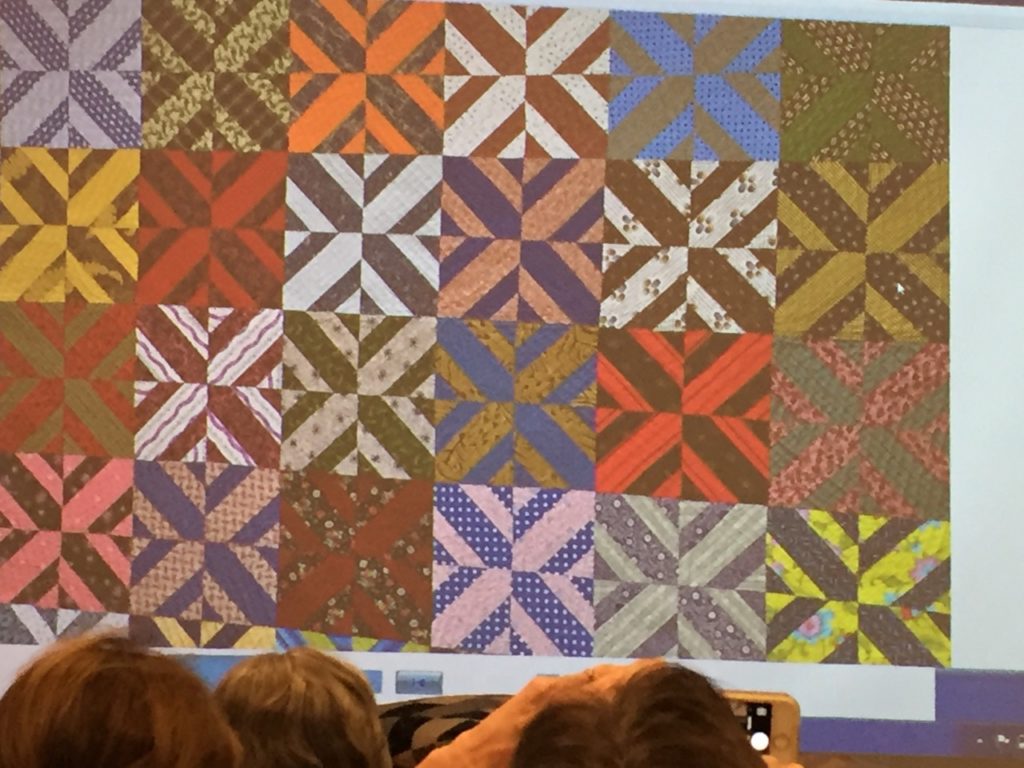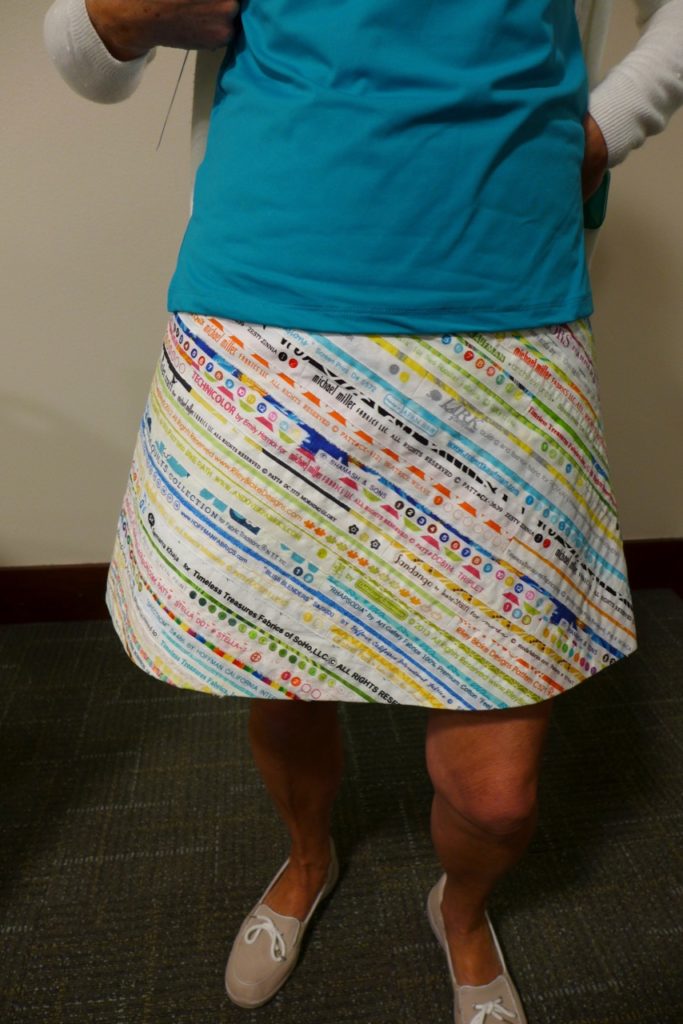Welcome to Moda Fabrics!
String-piecing, past and present
String-piecing, past and present
When Aristotle said “The whole is greater than the sum of its parts,” he likely wasn’t talking about string-piecing. But he could have been.

String-piecing offers an opportunity to transform bits of old and new fabrics (even ugly fabrics) to create a beautiful new quilt. (Carrie announced Moda’s String-along last week. If you missed that post, check here. There is loads of how-to advice, as well as information about joining in.)

Today we think of all the design opportunities that string-piecing affords, but in the past string-pieced quilts were often utilitarian and created out of a sense of frugality. If there was ever a technique that grew from the “waste-not, want-not” mindset, it’s string-piecing.

The origins of those fabric “strings” became clear to me recently while sorting through my mother’s sewing room. My mom was a talented garment maker who carefully rolled up and saved scraps from the clothing she stitched. As I inspected each bundle I realized that scraps left over from garment-making are often too long and narrow for use in a traditional quilt block. But that didn’t mean they would be thrown away. String-piecing is a perfect example of the inventiveness of women, who after stitching clothing for their family members used the leftover bits to keep them warm and cozy.

Because the strips are often narrow, it works best to piece them on a foundation and those foundations may provide a hint as to when and where a vintage quilt top was constructed. Quilt tops pieced using phone books or old newspapers may contain dates or other identifying information.

Plain feed sacks or those with logos on them were also used as a foundation for string-piecing. If you’re a collector of feed sack quilts, it’s a special bonus to find a quilt top with the logos still visible on the back, and sometimes the logo includes the location of a mill where the bag's contents were produced.

While string piecing is an old technique, it’s definitely appreciated by modern quilters, too. We’ve become aware that recycling and not wasting is important for our environment, and that’s essentially what string-piecing amounts to. Piecing with selvedges is one form of string piecing that’s been popular in the last few years.

And just like in the past, quilters are ever-inventive in the ways they choose to use up every last bit. We can’t wait to see what you come up with during Moda’s string-along!

Comments